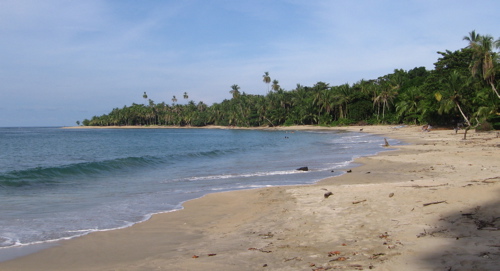 This has been my first trip to the tropics as a somewhat responsible adult, and there have been a few interesting lessons learned along the way. For instance, choice of clothing needs to be adjusted for a long stay in the tropics. Even though Fall approaches in the northern latitudes, down here the weather remains the same. All of my tweed and worsteds remain in Oregon where I left them. I should also note that I'm not a big fan of weird modern fabrics, and tend to stick with old-fashioned natural fibers most of the time. However, I will write about a few exceptions to this in the future.
This has been my first trip to the tropics as a somewhat responsible adult, and there have been a few interesting lessons learned along the way. For instance, choice of clothing needs to be adjusted for a long stay in the tropics. Even though Fall approaches in the northern latitudes, down here the weather remains the same. All of my tweed and worsteds remain in Oregon where I left them. I should also note that I'm not a big fan of weird modern fabrics, and tend to stick with old-fashioned natural fibers most of the time. However, I will write about a few exceptions to this in the future.I was very worried about the heat down here. It is warm, but not so hot as high summer in Southern Oregon. It is humid; in fact, far more so than Oregon, but not so humid as Georgia in the Summer. My ability to handle this sort of climate for a long period of time was completely unknown, so it was difficult to know what to pack. The following are a few lessons that I hope our readers can benefit from.
Wool
You've got to be kidding. There are no sheep down here, because they've all sweated themselves into extinction.
Cotton
Cotton isn't horrible, but it lacks wicking properties, so it tends to absorb all of one's sweat and then hang around like an annoying guest. It does dry eventually, however, and it's remarkably easy to clean. In Costa Rica it's not always common to have a laundry available, so hand-washing clothing is a very useful skill. Cotton is great for this, but bad for sweaty afternoons.
Cotton also isn't that bad for pants. Nice cotton khakis hold up rather well, and cotton canvas shoes are likewise an excellent choice. Seersucker might also be a really great choice, but I didn't bring any with me, so I haven't had a chance to test it.
Linen
This is one of my all-time favorite fabrics. Even when it's heavy, it breathes well, and a hefty linen garment is easily a three-season piece of clothing. It has an interesting rumple to it that adds an uncommon look to any ensemble, and has the benefit of wicking moisture. It breathes well, dries quickly, and hangs readily away from the body. Linen is easily a tropical favorite, even if it's not the easiest to clean.
In addition to being difficult to clean, hand-washed linen gets very, very wrinkly. If one truly desires that starched-shirt look, this might be a fabric to avoid. But in my opinion, the drawbacks are completely overshadowed by the benefits. Plus, linen is made out of flax.
Linen-Cotton Blends
I have found that this particular blend is probably the best. It doesn't have the peculiar drape of linen, has the quick-drying qualities of both fabrics, and tends to be far more affordable than pure linen. If one doesn't wish to put up with the rumples, wrinkles, and attitude of linen garments, a linen-cotton blend is certainly the way to go. It's also very easy to hand-wash.
Adjusting to the Heat
I am not sure how to advise people on this issue. Personally, I was afraid that the heat would be too much, and that my Norwegian blood would leave me a sweaty puddly of uselessness after just a few hours. However, a month into my stay, I have adjusted to the climate quite nicely. Sure, sweat is still my constant companion, but I find the heat and humidity to be quite nice compared to a week in the Alvord Desert with no potable water in sight.
At first I found my cotton shirts to be fairly unwearable. They would soak through with sweat and I would be a sticky, damp mess. Now they are pretty tolerable. In fact, for long-term travel they are light and easy.
In conclusion, I would recommend packing both linen and cotton clothing for travel in the tropics. Bring at least one or two linen shirts, and then choose linen-cotton blends before anything else. Do not forget pants.

 By
By 















Leave a comment